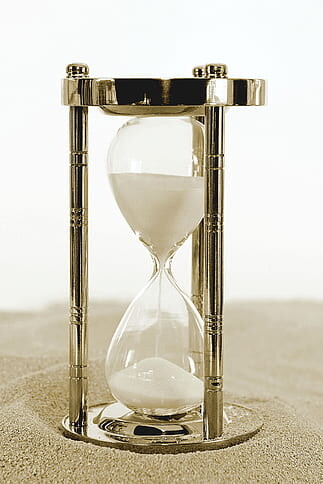Successful product development can lead to a variety of benefits. Before these benefits can be enjoyed, however, certain challenges must be addressed during the development process. In this article, we’ll discuss the most prominent challenges of product development and best practices to navigate each. With these approach strategies, you will be well-equipped to overcome these common problems and give your product the best chance at success.
Financial Risk
Much of a new product’s cost occurs before the product is even introduced to the market. As such, a significant amount of capital is required upfront to fund a new product. This initial cost covers designing, prototyping, testing, manufacturing, marketing, and more. The costs of each part of the development process can add up quickly, and if your product fails or does not provide a large enough profit to cover these costs, your company must absorb them.
 Tips to Tackle this Challenge
Tips to Tackle this Challenge
- Assess the risk and reward: Make sure you can afford to take on this new project by calculating the product development process’s cost, estimating your expected ROI, creating a budget, and determining the impact of a potential failed product on your company. Ensure a long-term focus because even successful products take time to gain popularity momentum that translates to sales.
- Look for ways to reduce costs: If it will not force you to compromise on the quality or important features of your product, consider a cheaper material or small design changes that make the manufacturing process simpler.
- Test generously: At various points of the design process, it is important to make prototypes of your product. In addition to allowing you to test the functionality and aesthetic of your design, prototypes can be used to gather feedback from your target audience. Thorough testing of both quality and customer satisfaction before the product is complete enables you to find and correct defects and other mistakes that could cause the product to fail or even result in a costly recall.
Competition
Depending on what type of product you are seeking to create, you will face varying amounts of competitors already on the market. Competition can present a major or minor obstacle, and it is almost impossible to avoid, especially if you are trying to meet a consumer trend. There is always a risk that a competitor’s product may launch at the same time as yours, potentially drawing attention away from your company.
 Tips to Tackle this Challenge
Tips to Tackle this Challenge
- Fill a gap: To make your product competitive, make sure it meets a consumer need not already fulfilled by other products on the market. This need may include improved performance, new features, or reduced cost. If your product answers that need, more customers may be drawn to it.
- Stay a step ahead: Your competitors may be working on the same new product or idea at the same time as you. It is, therefore, crucial to make your development process as efficient as possible to get your product to market first to capitalize on consumer demand. Just make sure that in your race to launch your product first you don’t cut corners that could hurt your product’s odds of success in the long run.
- Keep your product secret: Unique ideas should be kept between your company, partners, and manufacturers. If details of your product are revealed before you are ready to release it, competitors may take the information for their own product.
Changing Customer Tastes
In this time of the internet, social media, and rapid technological advancement, customer wants and needs are constantly changing. This means that the market is always evolving, and the product you worked on for months or more may not be in high demand by the time you launch it. This is particularly true for trends, which typically have small windows of opportunity in which you can develop and release a product while there is still significant interest.
 Tips to Tackle this Challenge
Tips to Tackle this Challenge
- Monitor the market: Market research shouldn’t end once you’ve determined the basis of your product. Collect data and conduct surveys throughout the product development process to ensure that your information is not outdated.
- Be flexible: Based on data and surveys taken from your target audience, you can respond to changes in the market before your product’s design is finalized. Depending what stage your project is in, this is not always possible or needed. However, if market research indicates that your product would have a higher chance of success by altering the design or features, it may be worth considering before the final design is sent to production.
- Work efficiently: Just as with trying to stay ahead of the competition, you should seek to have a streamlined product development process so that you can release your product quickly. A way to speed up the design process is with 3D printed prototypes.
Setbacks
Even with thorough planning, you are likely to encounter obstacles that you can’t foresee or control. Such instances may include shipping delays, failed prototypes, miscommunication with manufacturers or suppliers, and more. These situations add time to your project and may put you behind schedule.
 Tips to Tackle this Challenge
Tips to Tackle this Challenge
- Schedule more time: An easy way to avoid ending up in a time crunch or missing/moving a deadline, which stresses all parties involved, is to budget for more time at the start of your project. Building in extra time to compensate for possible setbacks will help make sure you meet your deadline.
- Set measurable goals: To reduce the risk of major prototype failure, review your progress at various design stages. This may look like setting quality goals, making more prototypes for each stage, and more.
- Communicate clearly: Your product development process will be much easier if everyone is on the same page. This includes your team, suppliers, manufacturers, and anyone else working on the product. Since meeting in person is not always possible, utilize all technology at your disposal to make sure all correspondence is easy to access and understand. Methods of communication may include phone/video calls, emails, pictures/diagrams, and more.
Tough Decisions
Innovation is never a clear-cut path. Many choices made during the product development process have pros and cons, such as what material to use, which manufacturer to work with, what design features to include or scrap, where to up or cut costs, and much more. Indecisiveness or uninformed decisions may lead to more problems or delays in the process later.
 Tips to Tackle this Challenge
Tips to Tackle this Challenge
- Listen to feedback: Final decisions shouldn’t be made without first considering feedback from every level of your team. Pay attention to survey data, manufacturing limitations, and other hard evidence to help ensure that decisions are not made hastily or uninformed.
- Know your priorities: At some point during development, you may find your product has too many features, will have better performance by changing shape or size, or needs another significant design change. It may be difficult to know what to sacrifice to make the product better. In this instance, it can be helpful to make a list of priorities for the project so you know what you will and won’t compromise on during development.
Patents
It can be frustrating and disheartening to find your envisioned product is already legally owned by someone else. On the other hand, if there is no patent for your planned product, you may be unsure if you need to file for one. Regardless, you can’t be ignorant to patents when it comes to developing your idea or you may run into trouble later.
 Tips to Tackle this Challenge
Tips to Tackle this Challenge
- Do your research: One of the worst things that can happen during product development is that you discover halfway through the process that your project violates an existing patent. To avoid having to scrap your idea and start over, do ample research for patents close to your idea before beginning the design process.
- Work around the patent: Patents are very specific in what they cover legally. If there is already a patent for your idea, you may be able to change your design enough to work around the existing patent and still release your own version of the product.
- Determine if you need a patent: Not all new products require a patent, and it is up to you to decide if your project is unique enough to warrant filing for one. However, regardless of your product, if you can’t afford the legal fees to defend the patent in court, obtaining one will essentially be useless.
Product Development at 3 Space
Here at 3 Space, we offer high quality product development services that take your project from concept to finished part. Our in-house 3D printers can also help speed the process along with rapid prototyping. For more information or to request a quote, contact us today.
